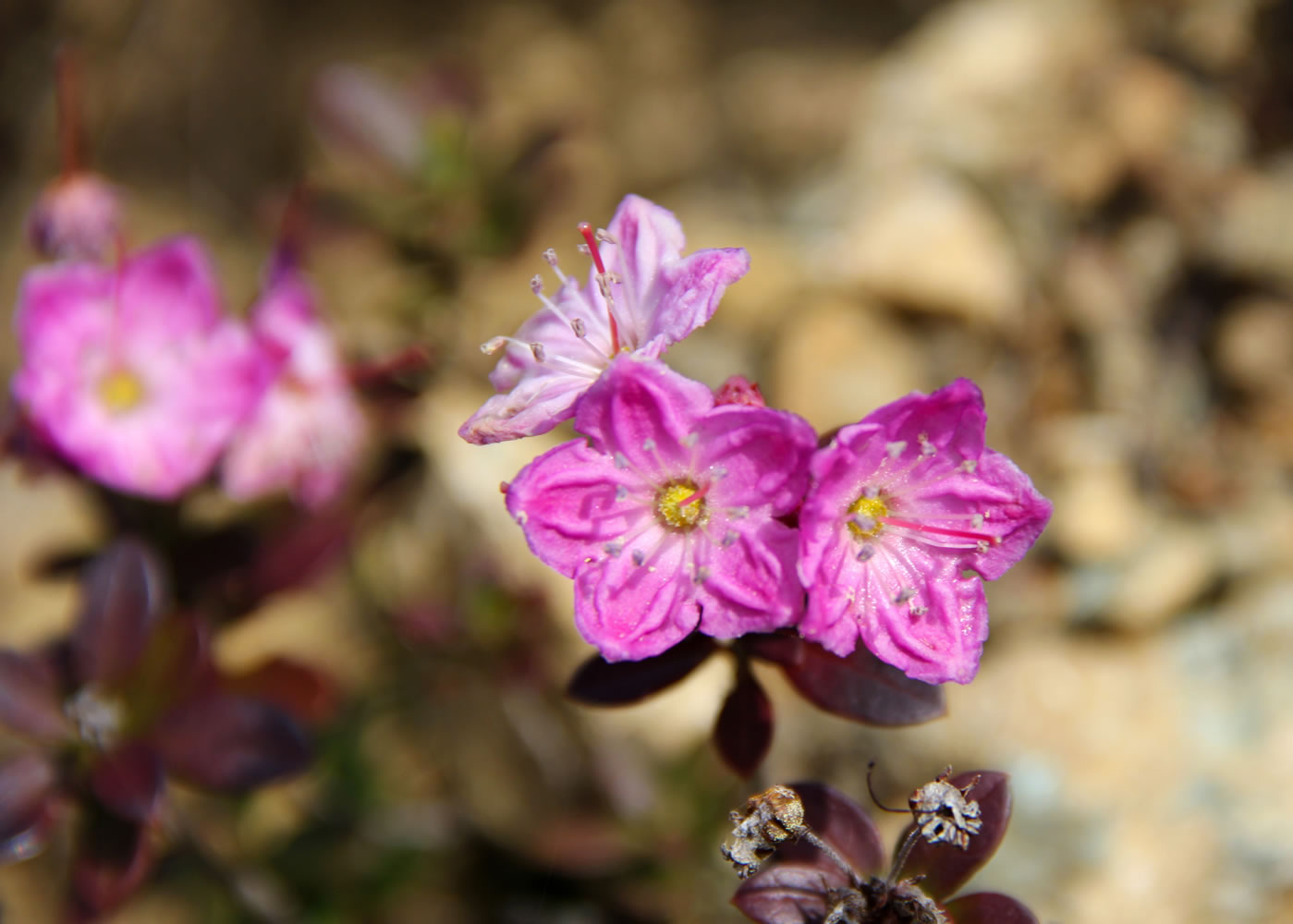Illinois River canyon
o General area: West of Selma, between Grants Pass and Cave Junction in southwest Oregon.
o Activities: Rare plant hunting, swimming hole hunting, whitewater kayaking and rafting, hiking, camping.
o Campsites: Sixmile, Store Gulch, Cedar Flat
o Trails: Kerby Flat (2-3 miles); Snailback Beach (1 mile); Horn Bend (2 miles); Illinois River Trail (5 miles out and back to York Creek, 12 miles to Pine Flat, 28 miles one-way).
Eight Dollar Road
One of the easiest ways to find rare plants in the Illinois Valley and Kalmiopsis Wilderness area is on Eight Dollar Road, just south of Illinois River Road. Make sure to park at the Eight Dollar Mountain Botanical Wayside and pick up a guide and map that shows highlights of the area.
Illinois River canyon
o General area: West of Selma, between Grants Pass and Cave Junction in southwest Oregon.
o Activities: Rare plant hunting, swimming hole hunting, whitewater kayaking and rafting, hiking, camping.
o Campsites: Sixmile, Store Gulch, Cedar Flat
o Trails: Kerby Flat (2-3 miles); Snailback Beach (1 mile); Horn Bend (2 miles); Illinois River Trail (5 miles out and back to York Creek, 12 miles to Pine Flat, 28 miles one-way).
Eight Dollar Road
One of the easiest ways to find rare plants in the Illinois Valley and Kalmiopsis Wilderness area is on Eight Dollar Road, just south of Illinois River Road. Make sure to park at the Eight Dollar Mountain Botanical Wayside and pick up a guide and map that shows highlights of the area.
SELMA, Ore. — As we hiked down the Illinois River Trail, tight-roping the edge of a burnt-orange canyon carved by the river 2,000 feet below, it felt as though we were searching for a needle in a haystack.
We’d entered southwest Oregon’s Kalmiopsis Wilderness, a vast landscape of canyons, mountains and rivers as remote as anything in the Lower 48, in search of a purple-pink flower the size of a fingertip and found nowhere else on Earth.
Every spring, pockets of kalmiopsis leachiana bloom from the arid, serpentine soils of an ancient mountain range home to plants so unique that it attracts botanists from around the globe.
The wilderness’ namesake flower isn’t found at some roadside pullout — heading into the backcountry and knowing where to look is required — which is why I enlisted veteran Siskiyou explorer Justin Rohde for help.
“Finding blooms of kalmiopsis leachiana just adds to the magic of hiking through such a dramatic area,” said Rohde, who lives outside Cave Junction. “It’s easy to find a secret oasis or wildflower-filled meadow where you’re the only human for miles.”
Rebirth in the Illinois Canyon
The first thing you notice upon entering the Illinois River canyon — west of Selma between Grants Pass and Cave Junction — is evidence of the catastrophe.
In the summer of 2002, the Biscuit Fire roared across this landscape like a biblical plague, becoming a nationwide story while torching almost 500,000 acres in Southern Oregon and Northern California.
Almost 12 years later, evidence of Oregon’s third-largest wildfire marks the landscape. Incinerated trees and torched mountainsides give driving into the canyon an almost eerie feeling.
While the damage looks severe from a distance, once you get up close to the river’s beaches, swimming holes and regenerating forests, the sensation changes.
Summer arrives early in the Illinois Valley — temperatures hit 80 to 90 with regularity in May and June. At places such as Store Gulch Campground, oak trees bask in the sunlight over sand beaches, and damage from the fire is nonexistent as you jump off boulders into deep green pools.
Illinois River Road, a sometimes steep and bumpy route, is the entryway into this recreation corridor.
Multiple trails take visitors to secluded beaches and hideaways at Kerby Flat, Snailback Beach and Horn Bend.
Stay on the road for campsites at Sixmile, Store Gulch and Cedar Flat. One more excellent stop is McCaleb Ranch, home to a funky swinging bridge and more swimming holes.
The road dead-ends after 19 miles — the final few miles are very rough and high-clearance is recommended. The road ends at primitive Oak Flat Campground, which is also the trailhead for the Illinois River Trail.
Hearty little flower
The story of kalmiopsis leachiana goes all the way back to the 1930s.
The tiny wildflower was first discovered by Lilla Leach, an independent botanist who along with her husband, John, collected plants in the Siskiyou Mountains over nine summers from 1928 to 1938.
This was no small undertaking considering the Siskiyou region — still remote today — was described in those days as “untamed, cougar-infested wilds.”
“The discovery of the leachiana is pretty cool,” said Gabe Howe, executive director of the Siskiyou Mountain Club, which maintains trails in the Kalmiopsis Wilderness. “John and Lilla were amateur botanists who went where the pros wouldn’t.”
The flower is a dwarfed rhododendron and believed to be the oldest living member of the ericacae family — it started evolving before the ice age. It’s a hearty little flower, growing in around 20 locations, all within the harsh ecosystem of the Kalmiopsis. The best bloom is usually early April to June, but it depends on slope, conditions and a host of other factors.



